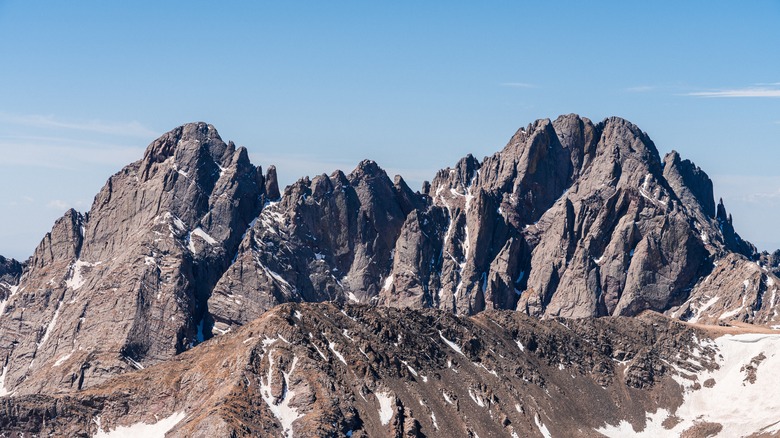Many intrepid hikers like a challenge, and the Rocky Mountains of Colorado offer some of the best hikes in the nation for people of just about every skill level. With 58 peaks topping 14,000 feet, these high-altitude beauties might seem daunting at first glance but that’s not to say they are off-limits to casual trekkers. Climbing Mount Elbert, the highest peak in the state, is a vigorous but relatively straightforward ascent to the summit, as is the sedate Class 1 east ridge of Quandary Peak. At the other end of the scale, some routes are definitely better suited to people with plenty of mountaineering experience, where we find the Crestone Group and the deadly Crestone Traverse.
Located in the Sangre de Cristo mountain range, which runs from southern Colorado into New Mexico, the Crestones are a craggy family of peaks that cover almost 300 square miles. Four of them reach an elevation of more than 14,000 feet and Kit Carson Mountain (14,165 feet) and Humboldt Peak (14,064 feet) are considered the easiest of the group. The two tallest, Crestone Peak (14,294 feet) and Crestone Needle (14,197 feet), are in another category with far more technical ascents, which can be very dangerous if you don’t take care. Many hikers take on each peak individually, but to add another layer of difficulty, there is also a perilous route known as the Crestone Traverse.
Why is climbing the Crestones so dangerous?

The Crestone mountains are known for danger, with an average of one hiker dying each year trying to reach their peaks and dozens more climbers requiring life-saving search and rescue services. Crestone Peak and Crestone Needle are the most notorious, challenging ascents where hikers must negotiate loose footing, falling rocks, high winds, ice and snow, and potentially fatal exposure to long falls. Of the two, Crestone Needle is classed as a more technical climb across dangerous terrain with sheer drops of around 2,000 feet in some places. As an added hazard, the easier Class 3 route isn’t immediately obvious once you have gained the summit and start making your way back down. In fact, according to Rocky Mountain Field Institute, a little over 46% of all search and rescue missions between 2015 and 2020 occurred on Crestone Needle.
Crestone Peak is taller but generally considered less challenging, although it still requires plenty of respect. In July 2015, several accidents occurred in the “Red Gully” part of the climb, a section notorious for loose rock and holding snow and ice even in the summer months. A 10-week pregnant woman with much experience climbing 14ers slipped and fell around 150 feet, fracturing her ribs and breaking a leg. It took 14 people from various search and rescue teams to rescue her from the mountain. About two weeks later, another hiker wasn’t so lucky, falling on his descent in slippery conditions and dying from his injuries.
The Crestone Traverse is not for the inexperienced or faint-hearted

If tackling Crestone Peak and Crestone Needle wasn’t perilous enough, there is an even more dangerous way to visit both summits: The Crestone Traverse. Rather than hiking to the top of each one individually from Broken Hand Pass, the Traverse is a hair-raising shortcut across the jagged ridge between the two peaks. It is notorious for its extremely difficult Class 5 climbing, which means anyone brave enough to attempt it faces potentially fatal falls if they put a foot wrong. To quote an experienced climber: “If you get the heebie-jeebies from exposure, this wall might make you cry or crap your pants,” as per 14ers.com.
It is advisable to only attempt the Crestone Traverse in dry weather and without strong winds, and doing so without the necessary expertise, physical ability, and appropriate equipment can prove deadly. The route takes you on a vertiginous journey across steep, bare cliffsides, gullies, and ridges littered with loose rock with an almost ever-present danger of plummeting to death. Falling rocks present another hazard, and certain sections of the Traverse top Class 5 are difficult. The danger should not be underestimated: In August 2022, a man fell and died on the route, and his companion needed rescuing after she tried climbing down to him and got stuck. All in all, completing the route is a high reward for hikers, but it is an adventure best left to professionals.

